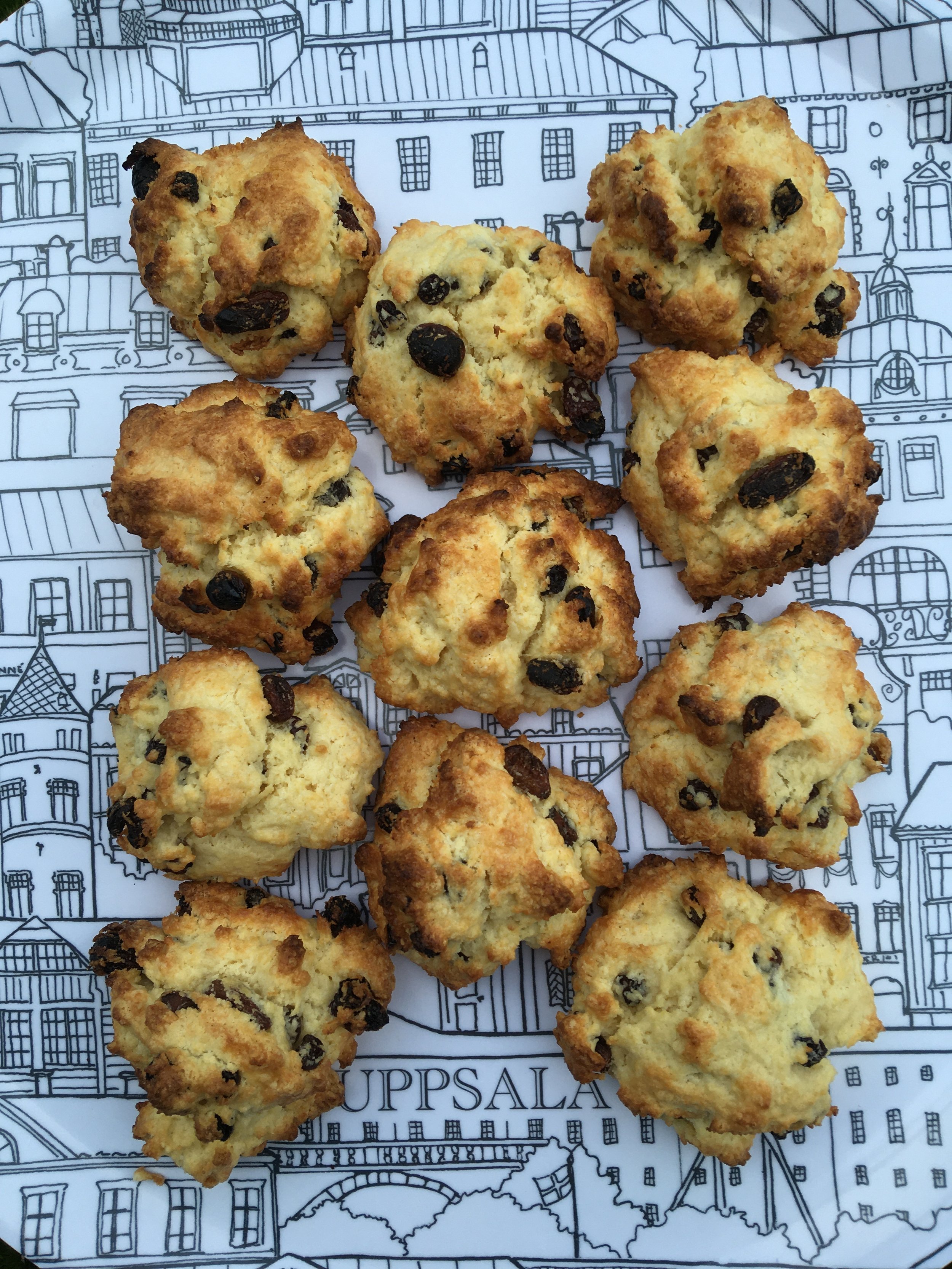The turning point that launches this third chapter of Agatha Christie’s autobiography is the death of her beloved father—and the ensuing discovery that there was not nearly as much money left over as anyone thought. That meant a lot of changes, not least of all in the household budget.
Not that Jane the cook accepted this new state of affairs. Agatha reports how, even after Mrs. Miller advised Jane to cut back, these dishes emerged from the kitchen in a steady stream:
an enormous roast
colossal beefsteak pies
huge tarts
gargantuan steam puddings
pastries
buns
scones
rock cakes
jam tarts
macaroni cheese
rice pudding
Agatha sometimes overheard Jane’s orders with the grocers placed over the phone: “And I want six lobsters, hen lobsters, and prawns…” or “twelve fillets of sole.” Not exactly the quantities you’d want for a household of two!
Agatha’s love for food diminished in no way, even with a tightened belt. She reminisces about boiled sweets, buns, biscuits, and gingerbread. “There could be no delight in life for a greedy girl like tea at Rumpelmayer’s. My favourites were those glorious cakes with cream and marron piping of a sickliness which was incomparable.” She loved jams and preserved fruits, pears and windfalls from apple trees, including unripe apples—the only thing ever to cause her “bilious attacks.” Many times she refers to chocolates, boxes of chocolates, chocolate creams and every imaginable variety. She preferred mackerel over sole and enjoyed whiting with its tail in its mouth. She ate leg of mutton, beefsteak and stout (these last two prescribed for singers in training).
This in turn leads to an adult memory, out of place but relevant. A fellow traveller with Agatha en route to Syria told her once about how to feed yourself while traveling on “eggs… toasted cheese… scrambled egg…” but mostly importantly conveyed the adage: your stomach’s a good servant, but a bad master.
Christmas dinner at Abney Hall, where her sister and brother-in-law lived, was a truly spectacular affair. It’s astonishing that anybody, ever, ate like this. Here’s Agatha’s list of Christmas delicacies:
oyster soup
turbot
boiled turkey
roast turkey
large roast sirloin of beef
plum pudding
mince pies
“trifle full of sixpences, pigs, rings, bachelors’ buttons and all the rest of it”
innumerable kinds of dessert
crackers
grapes
oranges
Elvas plums
Carlsbad plums
preserved fruits
handfuls of chocolates
chocolates (again) at “a terrific tea”
great iced Christmas cake
cold turkey
hot mince pies
As if anticipating our disbelief, she assures that no one ever got unwell from such feasting. On the rare occasion that got sick, it was because they ate wild mushrooms they shouldn’t have, but that was counteracted with “ipecacuanha wine,” no harm done. But apparently no one had allergies, intolerances, or otherwise such delicate digestion that they needed special diets. “I cannot remember anybody living on a diet of fish and milk.”
But perhaps the most important detail to emerge from this cornucopia of a chapter is Agatha’s early, lifelong, and passionate devotion to cream. She writes of “ordinary plain, neat cream,” her local “Devonshire cream,” “raw cream,” a tipple of “half milk half cream,” and downing “cream by the half-pint,” which got the affectionate nickname of “our pinta cream.” What single malt whiskey can compete with raw, local Devonshire cream?
With such marvelous choices I struggled to single one recipe out for this post (and suggesting “1 pint cream. Drink neat” seemed like cheating). Since it’s almost Christmas, I seriously considered mince pies or gingerbread. But since here yet again Agatha invoked Jane’s wonderful rock cakes—and I’d never tried one in my life—they emerged the winner.
Fear not: these are not Hagrid’s rock cakes. They’re not hard at all; the name comes from their pebbly surface texture, or maybe the way the raisins poke through like pebbles. Americans will recognize them as sweetened drop biscuits. They were better than I expected, in fact delicious, especially when eaten approximately 7 minutes after coming out of the oven, with a thick layer of salted butter, which, when you think of it, is just cream at another point in its life cycle.
Rock Cakes
½ lb (225 g) flour
¾ tsp baking powder
2 oz (55 g) sugar
½ tsp salt
8 Tbsp (110 grams) cold unsalted butter, diced
½ c raisins
¼ c dried currants
1 egg
2–3 tablespoons milk
Preheat the oven to 425°F (210°C). Combine the flour, baking powder, sugar, and salt in a food processor and whizz a couple times to combine. Tip in the diced butter and pulse until fully incorporated, with a fine sandy texture. (Jane would certainly have used her fingers to rub it in, and you can do that too. But I’d rather wash the food processor bowl.) Tip the contents into a bowl and stir in the raisins and currants. Beat the egg with 2 Tbsp of milk in a small bowl, then pour in all at once to the flour mixture and stir well. Use your hand when a wooden spoon gets too awkward to use. Add 1 more Tbsp milk but only if absolutely necessary to bring it all together. Drop 12 dollops of dough on a greased or parchment-lined baking sheet (redistribute what’s left over if you didn’t eyeball it right on the first try). Bake 10 minutes or so till nicely browned on the outside. Serve warm with lots of butter, and maybe some jam. And a pinta cream to wash it down.
